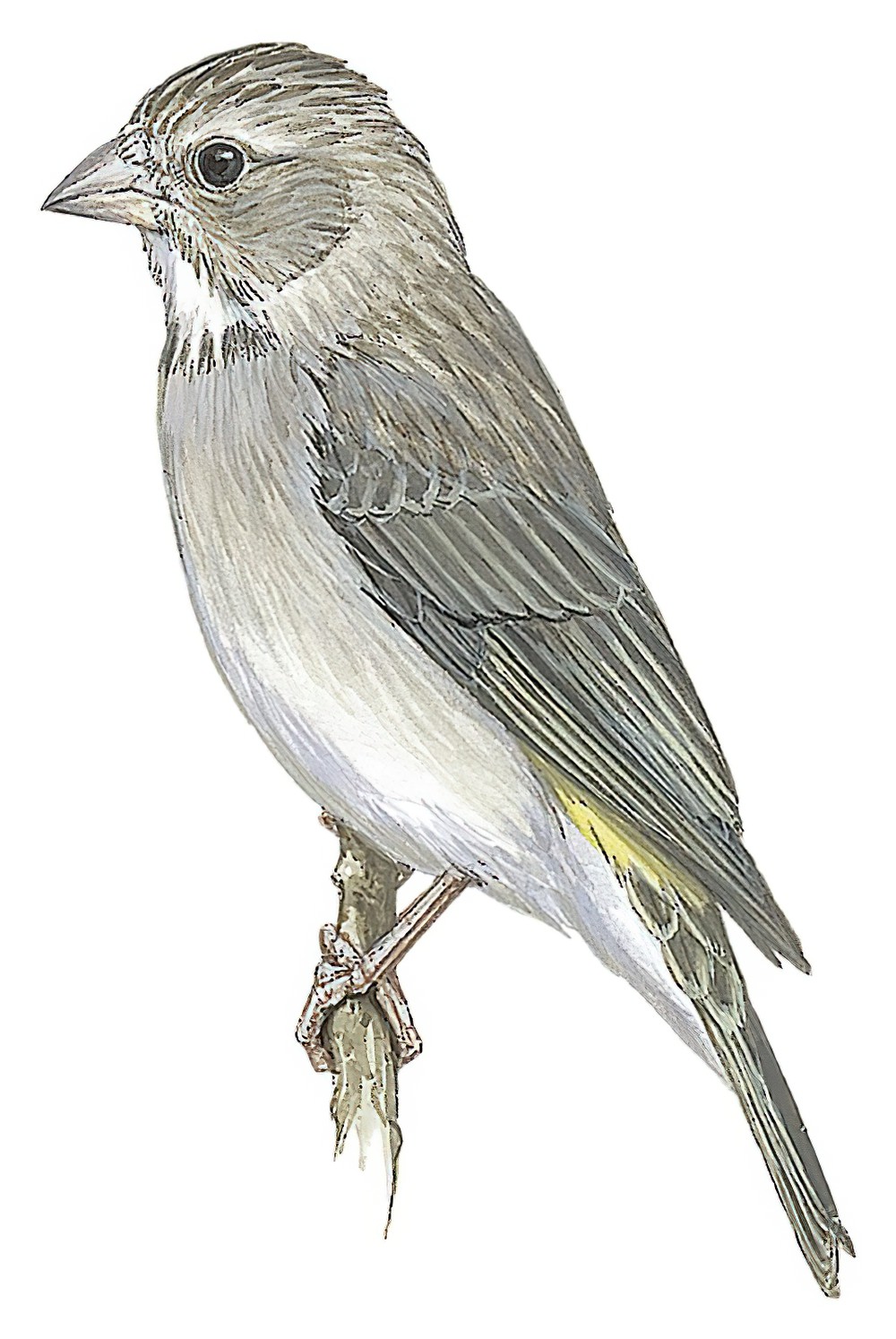Yellow-rumped Serin / Crithagra xanthopygia

Yellow-rumped Serin
SCI Name:
Protonym: Serinus xanthopygius NeueWirbelth.Vog. p.96
Taxonomy: Passeriformes / Fringillidae / Crithagra
Taxonomy Code: yerser1
Type Locality: Schoada Valley, Simen, Abyssinia.
Author: Rüppell
Publish Year: 1840
IUCN Status: Least Concern
DEFINITIONS
CRITHAGRA
(Fringillidae; Ϯ Brimstone Canary C. sulphurata) Gr. κριθη krithē barley; αγρα agra hunting < αγρεω agreō to hunt; "CRITHAGRA. Rostrum breve, sub-conicum, crassum, integrum; culmine arcuato; tomio curvato. Alæ subelongatæ; remigibus 1ma, 2da, 3tia, et 4ta æqualibus, longissimis. Cauda mediocris, subfurcata. ... Types. Lox. sulphurata, flaviventris. Lath. Africa only?" (Swainson 1827); "Crithagra Swainson, 1827, Zool. Journ., 3, p. 348. Type, by subsequent designation (Sharpe, 1888, Cat. Birds Brit. Mus., 12, p. 348), Loxia sulphurata Linnaeus." (Rand in Peters, 1968, XIV, p. 208).
Var. Chrithagra, Grithagra.
Synon. Bolbospiza, Buserinus, Dendrospiza, Lormarinsia, Menellia, Microserinus, Neospiza, Ochrospiza, Phaeospiza, Poliospiza, Psammospiza, Pseudochloroptila, Serinops, Spodiospina, Tephrospiza.
xanthopygia / xanthopygium / xanthopygius
Gr. ξανθος xanthos yellow; -πυγιος -pugios -rumped < πυγη pugē rump.
Zanthopygia
(syn. Ficedula Ϯ Yellow-rumped Flycatcher F. zanthopygia) Specific name Muscicapa zanthopygia Hay, 1845; "Zanthopygia, nobis. This is a genus of Chat-flycatchers, which I am not as yet prepared to approximate to any other. In the form of its beak, it bears much resemblance to the Australian genera Eopsaltria and Petroica (which branch off from Pachycephala*), and also to the Pratincolæ; but of the two species to be described, the bill of the first is vertically deeper than that of the second, which renders generalization more difficult, although the generic identity of the two birds is unquestionable. Bill of mean length, acutely triangular as viewed from above, or much narrower than in the more characteristic Flycatchers; its upper ridge angulated, and the tip of the upper mandible incurved and emarginated: gape beset with fine hair-like vibrissæ. Tarsi and toes moderately small and weak, the tarse as long as the middle toe with its claw; wings reaching half-way down the tail, their first primary short, only a quarter the length of the second, which is shorter than the fifth, the third and fourth being subequal and longest. Tail of mean length. Plumage rather firm: the males black above, with yellow rump and under-parts, and a large white wing-spot. From Malasia. Z. leucophrys, nobis. ... Colour deep black above, bright yellow below and on the rump ... The femaleϮ differs widely in being a light olive-green above, tinged with grey ... From Malacca. Z. chrysophrys, nobis. ... The female I have not seen, nor am I aware of the habitat of the species; but have some reason to suspect Australia, in which case it will probably bear a prior name. ... *Timixos meruloides, nobis, J.A.S. XI, 195, is Pachycephala olivacea, Vig. and Horsf. ϮMuscicapa zanthopygia, A. Hay, Madr. Journ. No. XXXI [= XIII], 162." (Blyth 1847); "Zanthopygia Blyth, 1847, Journ. Asiat. Soc. Bengal, 16, p. 123; emended to Xanthopygia by G. R. Gray, 1855, Cat. Gen. Subgen. Birds Brit. Mus., p. 53. Type, by subsequent designation (G. R. Gray, 1855, p. 53), Zanthopygia leucophrys Blyth [= Muscicapa zanthopygia Hay, 1845]." (Watson in Peters 1986, XI, 335). Var. Xanthopygia.
UPPERCASE: current genus
Uppercase first letter: generic synonym
● and ● See: generic homonyms
lowercase: species and subspecies
●: early names, variants, mispellings
‡: extinct
†: type species
Gr.: ancient Greek
L.: Latin
<: derived from
syn: synonym of
/: separates historical and modern geographic names
ex: based on
TL: type locality
OD: original diagnosis (genus) or original description (species)












